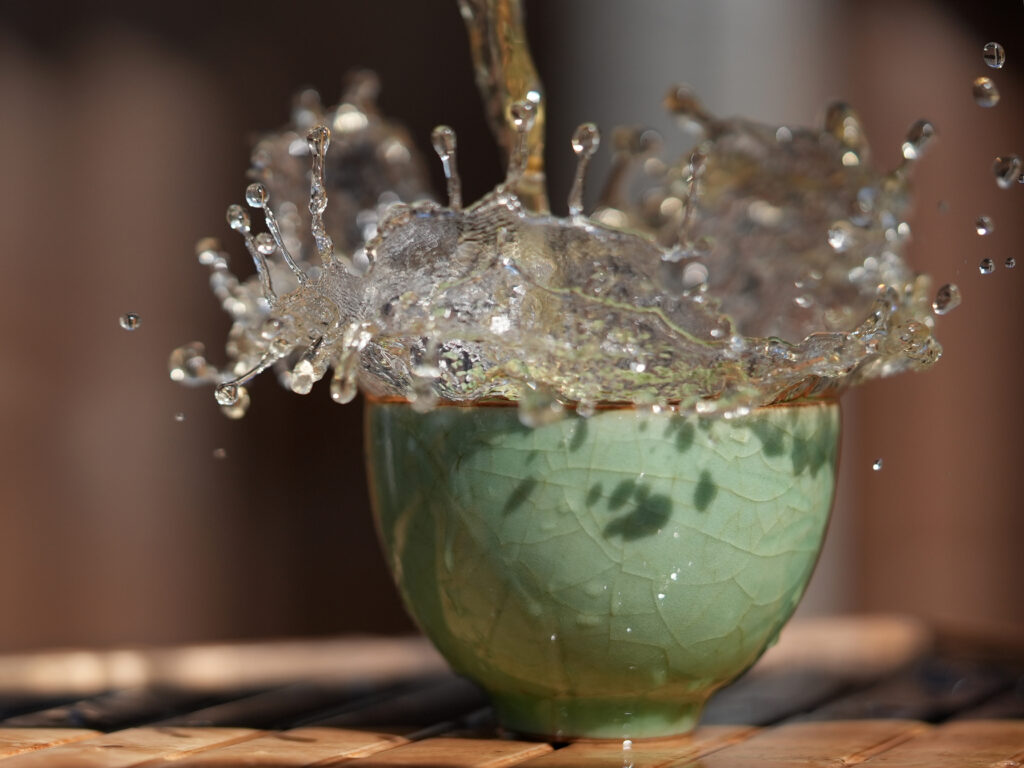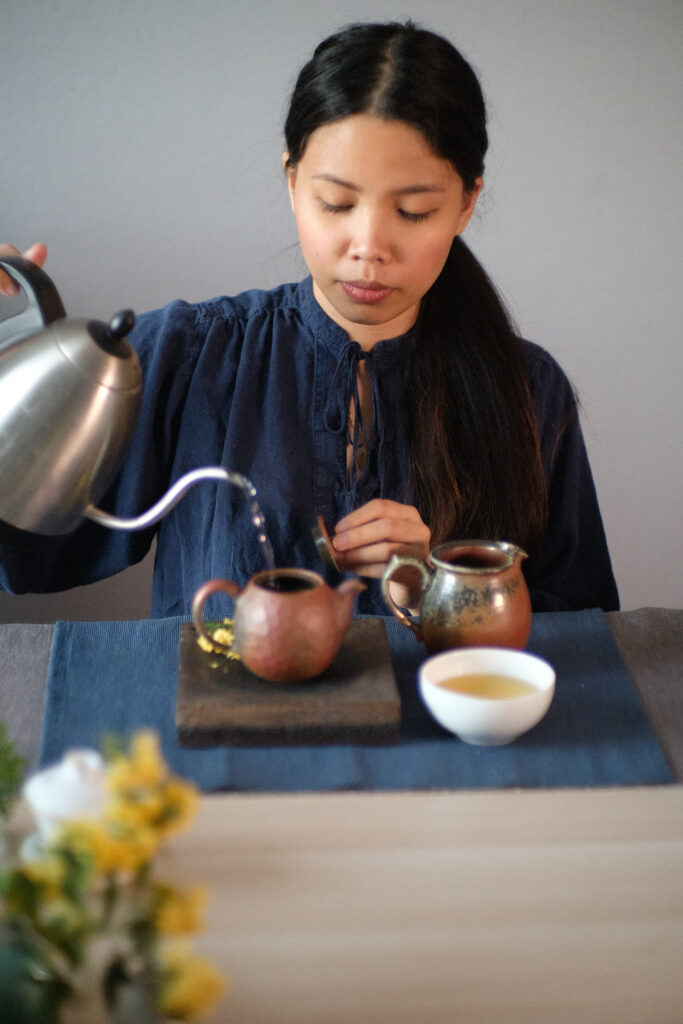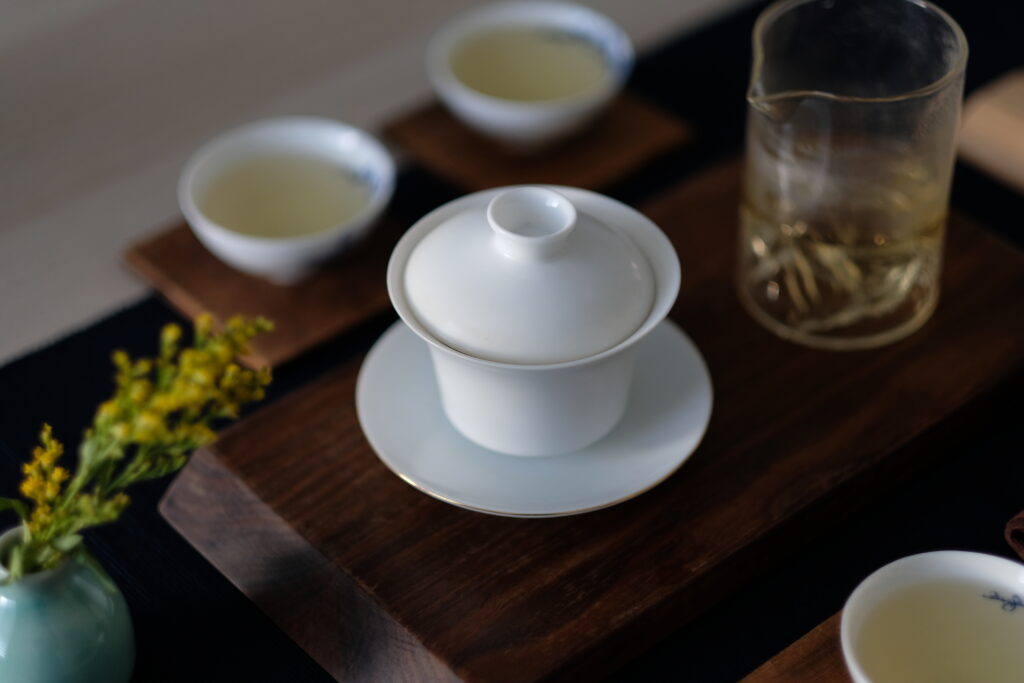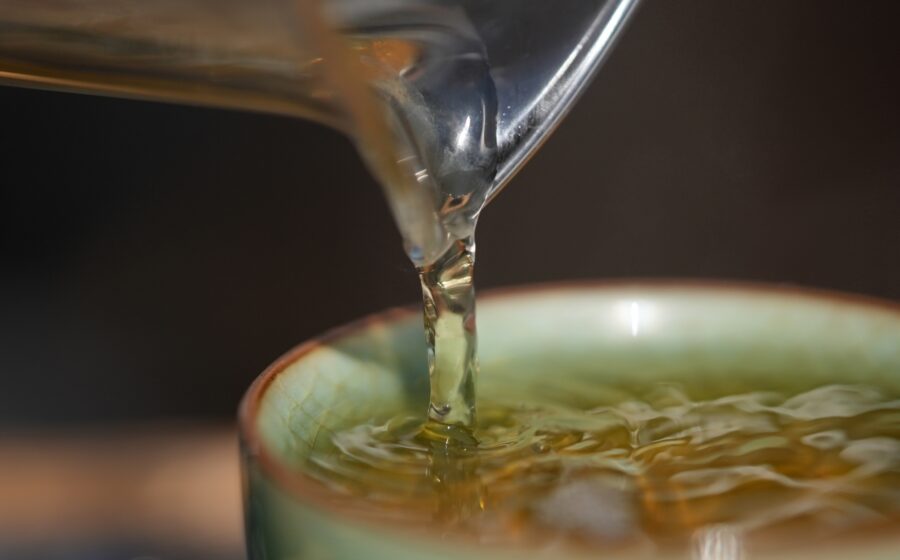Don Mei wants you to brew stronger tea.
More specifically, Mei wants you to brew gongfu tea, a Chinese brewing method that dates back to the 18th century.
“The richness that comes from a high leaf-to-water ratio changes everything. It’s not just the richness of taste but also aroma and mouthfeel,” says Mei, who owns the London-based tea company Mei Leaf, a tea importer that also operates a teahouse in London’s Camden neighborhood.
Although the specifics vary according to the type of tea, practitioners of gongfu generally use a much higher leaf-to-water ratio and repeated short infusions—sometimes as little as 10 seconds.
“You have less room for error. A few seconds over-brewed or under-brewed changes things dramatically,” says Mei.

Throughout a tea brewing session, brewers will notice the flavors of the tea change and develop with each infusion. Some teas can be infused upwards of ten times.
“It’s an immediate feedback loop. The ability to do several small infusions over time allows you to adjust for flavor,” says Rie Tulali, cofounder of the website Tea Curious.
Gongfu has often been associated with meditation and mindfulness. Although Tulali and Mei both agree mindfulness can lead to a greater appreciation of gongfu tea, they hope to demystify the process.
“Gongfu tea is tea being made with effort and skill,” says Tulali.
Capturing the Aromatics
For Mei, part of the appeal lies in gongfu’s ability to retain volatile aroma compounds.
“By shortening the extraction time, you preserve the aromatics for a longer time. If you brew for a longer time, say two to five minutes, you’re losing a lot of the aromatics during the brewing phase,” says Mei. “With gongfu, you’re trying to capture the aromatics as they emerge from the leaf.”
Although gongfu is finding a new audience in emerging tea markets, the brewing method dates back hundreds of years.
“Gongfu is a style of brewing that was developed around the 18th century in South China near Guangdong,” says Mei. “It also coincided with the invention of oolong tea, which is a particularly fragrant style of tea. Prior to that, the most popular way [to brew tea] was something called big pot brewing, which was loosely associated with what we call Western style brewing today: using a small amount of leaf and steeping in water for a longer period of time.”

The method aims to brew each tea to its full potential. Whether it’s a white, green, oolong, black, or Pu’erh tea, Tulali and Mei believe gongfu is the best way to brew most whole-leaf teas. Different styles, however, require different brewing strategies.
“Some compounds are terpene-based aromatics, then you have the inner leaf compounds, which are more carbohydrates and polyphenols,” says Mei. “What you’re trying to achieve with gongfu brewing is a balance.”
Depending on the tea, Mei recommends adjusting the water temperature, leaf-to-water ratio, or the infusion time. Typically, each infusion is lengthened by 5-10 seconds with each subsequent brew.
Although the so-called Western style of tea brewing remains almost universal in tea cafes and coffee shops around the Western Hemisphere, both Mei and Tulali believe more tea houses and cafes can incorporate gongfu into their beverage programs.
Many teahouses in China have roaming servers that pour the hot water for each infusion. Mei found that system impractical for a British context, so he came up with an unconventional solution.
“We ask the client to brew. We give you tea, we give you water, we give you instructions, and we ask you to brew. And that is pretty revolutionary,” says Mei. “It was a big risk when we made the switch eight years ago.”
Short Brew
For those who are considering offering gongfu-style brewing in their cafe or teahouse, Mei has a word of warning. Gongfu-style brewing is more resource and labor-intensive and comes with a learning curve. The method uses a larger dose of tea leaves and typically requires specialized brewing equipment and additional staff training.

“From a revenue point of view, you have to justify that cost with a higher price. You have to reframe and reset people’s relationship with tea to do that,” says Mei.
Despite the challenges, Mei mostly sees the upside. Rather than simply steeping a sachet, the customer is invited into a dynamic process that invites deeper contemplation.
“You have this much more personal experience with the tea you’re brewing,” he says.
For those interested in learning the method, Tulali and Mei recommend investing in a gaiwan, a small cup-shaped brewer. The shape of the gaiwan allows the leaves to open up and infuse evenly. The gaiwan lid maintains a steady temperature and holds the tea leaves back when decanting each infusion into a carafe or cup. Gongfu practitioners often smell the tea leaves in the gaiwan between infusions to better assess the aromatics.
Additionally, a variable-temperature kettle allows for better temperature control. Green teas typically perform better with lower temperatures, while oolong and black tea require temperatures closer to boiling. Optional accessories include trays with built-in drains and even tea pets—small figurines many gongfu practitioners enjoy pouring the first infusion over.
Mei and Tulali have published gongfu guides but also recommend that users experiment with different techniques.
“If you don’t break the rules, it’s not gongfu cha anymore,” says Tulali. “You’re just following steps.”
Cover photo courtesy of Mei Leaf
















